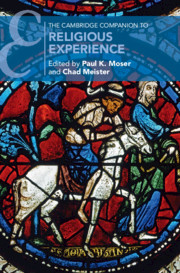Book contents
- The Cambridge Companion to Religious Experience
- Cambridge Companions to Religion
- The Cambridge Companion to Religious Experience
- Copyright page
- Contents
- Figures
- Contributors
- Preface
- Introduction
- Part I Characterizing Religious Experience
- Part II Religious Experience in Traditional Monotheism
- Part III Religious Experience Outside Traditional Monotheism
- Part IV Prominent Themes and Challenges
- 10 Exploring the Nature of Mystical Experience
- 11 Miraculous and Extraordinary Events As Religious Experience
- 12 Evil, Suffering, and Religious Experience
- 13 Naturalism and Religious Experience
- 14 Meaning and Social Value in Religious Experience
- Index
- Cambridge Companions to Religion
- References
11 - Miraculous and Extraordinary Events As Religious Experience
from Part IV - Prominent Themes and Challenges
Published online by Cambridge University Press: 20 June 2020
- The Cambridge Companion to Religious Experience
- Cambridge Companions to Religion
- The Cambridge Companion to Religious Experience
- Copyright page
- Contents
- Figures
- Contributors
- Preface
- Introduction
- Part I Characterizing Religious Experience
- Part II Religious Experience in Traditional Monotheism
- Part III Religious Experience Outside Traditional Monotheism
- Part IV Prominent Themes and Challenges
- 10 Exploring the Nature of Mystical Experience
- 11 Miraculous and Extraordinary Events As Religious Experience
- 12 Evil, Suffering, and Religious Experience
- 13 Naturalism and Religious Experience
- 14 Meaning and Social Value in Religious Experience
- Index
- Cambridge Companions to Religion
- References
Summary
Bowie focuses on some experiences that are self-described or described by others as being “religious,” in order to explore what qualifies an experience to be extraordinary and miraculous. She uses two case studies to illustrate the role experience plays in extraordinary and miraculous events and the relation they have to mystical experience, one involving a near-death experience and the other involving apparitions of Mary.
Keywords
- Type
- Chapter
- Information
- The Cambridge Companion to Religious Experience , pp. 261 - 283Publisher: Cambridge University PressPrint publication year: 2020
References
- 1
- Cited by



